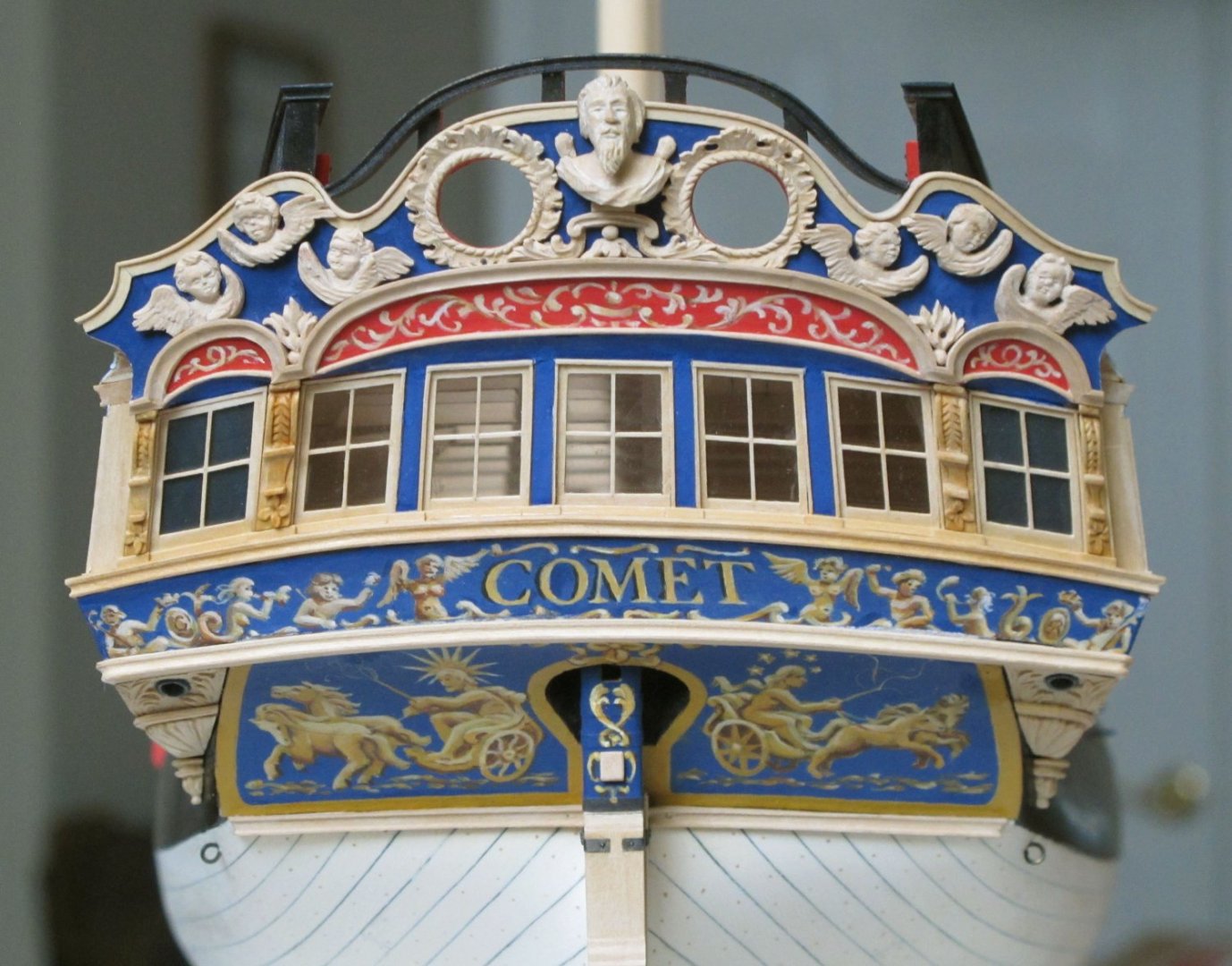-
Posts
13,301 -
Joined
-
Last visited
Content Type
Profiles
Forums
Gallery
Events
Everything posted by druxey
-
Lovely and delicate looking, Greg. Are you going to lash the burton pendants to the shrouds?
-
I agree with Marc that, for fine work, breath control is essential. It's a very zen and highly focussed exercise. A really good quality sable brush that 'points' well is another ingredient for success. Oh, yes, and patience!
- 2,696 replies
-
- heller
- soleil royal
-
(and 9 more)
Tagged with:
-
Looks terrific! Well done, Bob. Please make sure she gets a protective case now, she's worth it.
- 146 replies
-
- Harriet Lane
- Model Shipways
-
(and 1 more)
Tagged with:
-
Traditionally decks were nailed and the heads countersunk. The hole above was filled with a diamond shaped or round wood plug, grain running the same way as the planking. As a result it is not very visible. Side and bottom planking treenails are far more obvious. My personal preference is no treenails in deck planks, although many models have them.
-

Jim Byrnes Thickness Sander Operation Tips
druxey replied to ChrisLBren's topic in Modeling tools and Workshop Equipment
The most likely reason for the groove is that the tip end of the plank drops as it comes off the outfeed table. Two solutions: One, hold the outfed plank close to the lip of the outfeed table, not its far end. Two, construct an extension to the outfeed side to support longer stock. -
As you are using card, why not paper sails as well? Many model-makers use SilkSpan with great success.
-
Generally panes were no larger than about 9" by 12". Some contemporary models show sashes as well, just to up the game. You can see tis in one of the photos you posted. If you are building at 1:48, you should be able to use 1/64" square Castello or similar to form the dividing muntins. The trick is an accurate card pattern of each light from which to work. One method is shown in TFFM, Volume II. Cuttigng and gluing wood will be easier than wire!
-
It will be next year, I understand. Well worth waiting for!
-
That red line measurement should run all the way along the post, up the transom bulkhead and to the 'corner' where the strip representing the topside comes; just like the other green measurements.
- 20 replies
-
- Planking
- Lining out
-
(and 2 more)
Tagged with:
-
Off to flying start! But do take things at an easy pace, or 'oopsies' will ensue!
- 25 replies
-
- Lowell Grand Banks Dory
- Model Shipways
-
(and 2 more)
Tagged with:
About us
Modelshipworld - Advancing Ship Modeling through Research
SSL Secured
Your security is important for us so this Website is SSL-Secured
NRG Mailing Address
Nautical Research Guild
237 South Lincoln Street
Westmont IL, 60559-1917
Model Ship World ® and the MSW logo are Registered Trademarks, and belong to the Nautical Research Guild (United States Patent and Trademark Office: No. 6,929,264 & No. 6,929,274, registered Dec. 20, 2022)
Helpful Links
About the NRG
If you enjoy building ship models that are historically accurate as well as beautiful, then The Nautical Research Guild (NRG) is just right for you.
The Guild is a non-profit educational organization whose mission is to “Advance Ship Modeling Through Research”. We provide support to our members in their efforts to raise the quality of their model ships.
The Nautical Research Guild has published our world-renowned quarterly magazine, The Nautical Research Journal, since 1955. The pages of the Journal are full of articles by accomplished ship modelers who show you how they create those exquisite details on their models, and by maritime historians who show you the correct details to build. The Journal is available in both print and digital editions. Go to the NRG web site (www.thenrg.org) to download a complimentary digital copy of the Journal. The NRG also publishes plan sets, books and compilations of back issues of the Journal and the former Ships in Scale and Model Ship Builder magazines.



